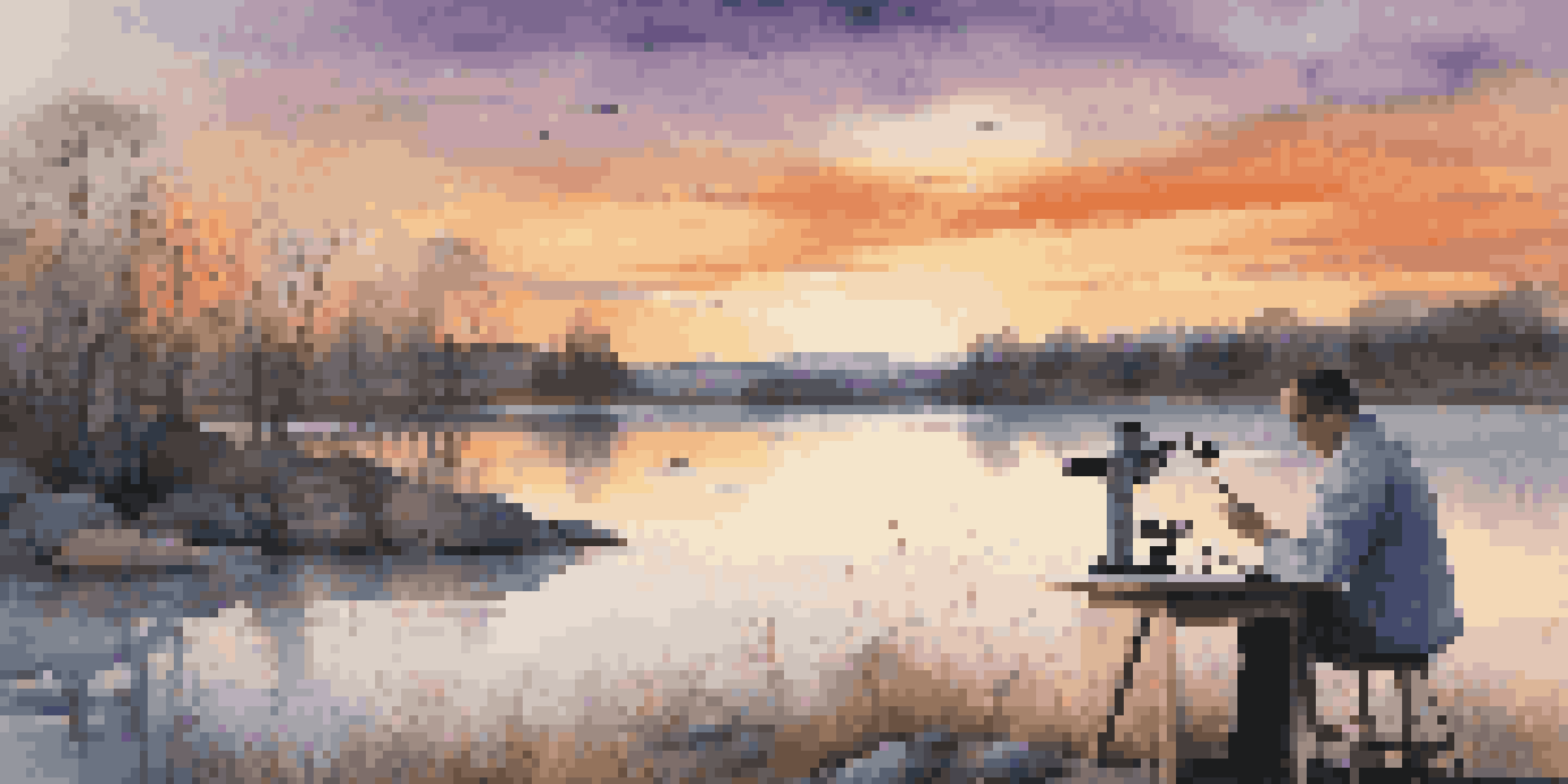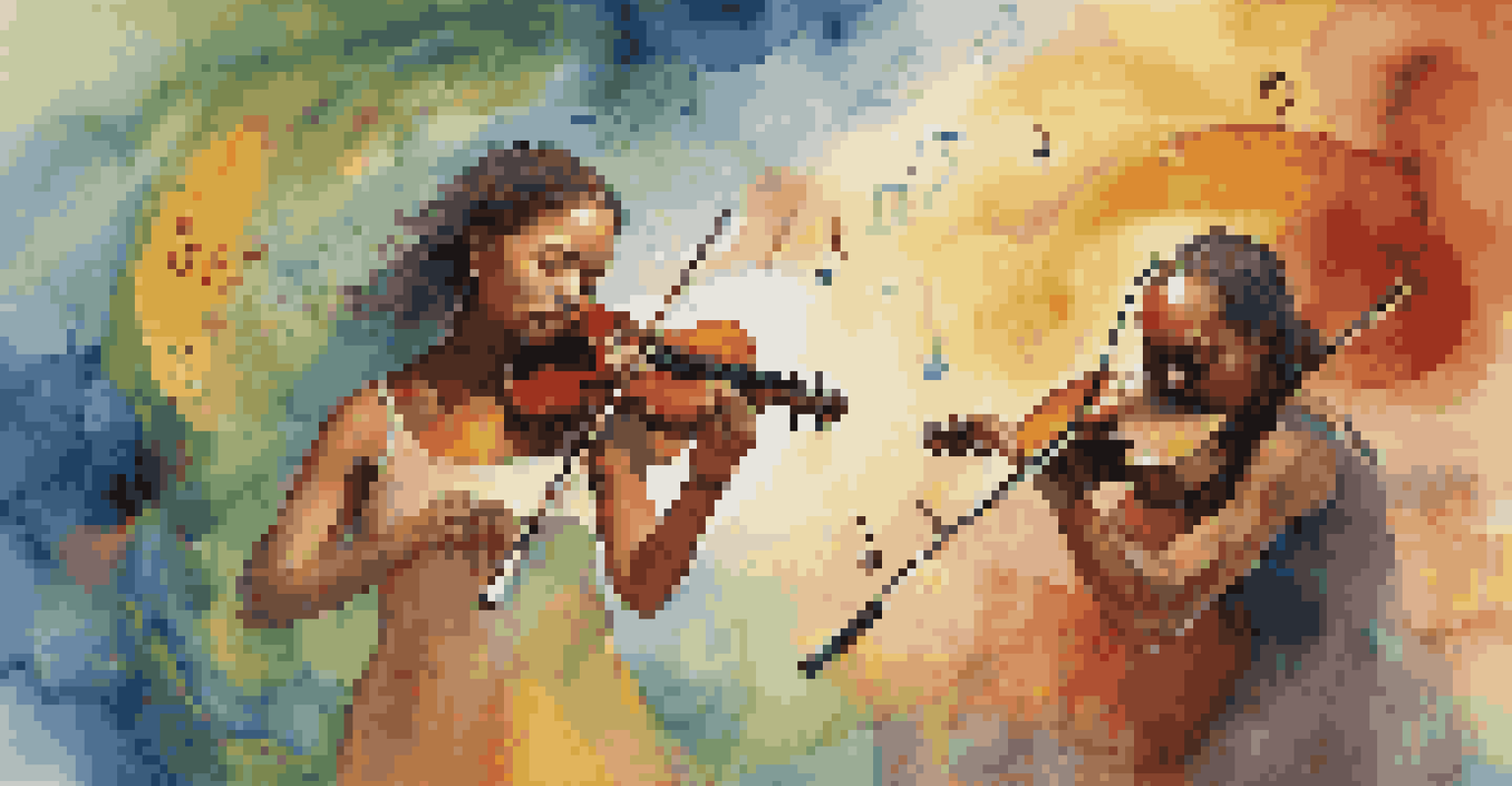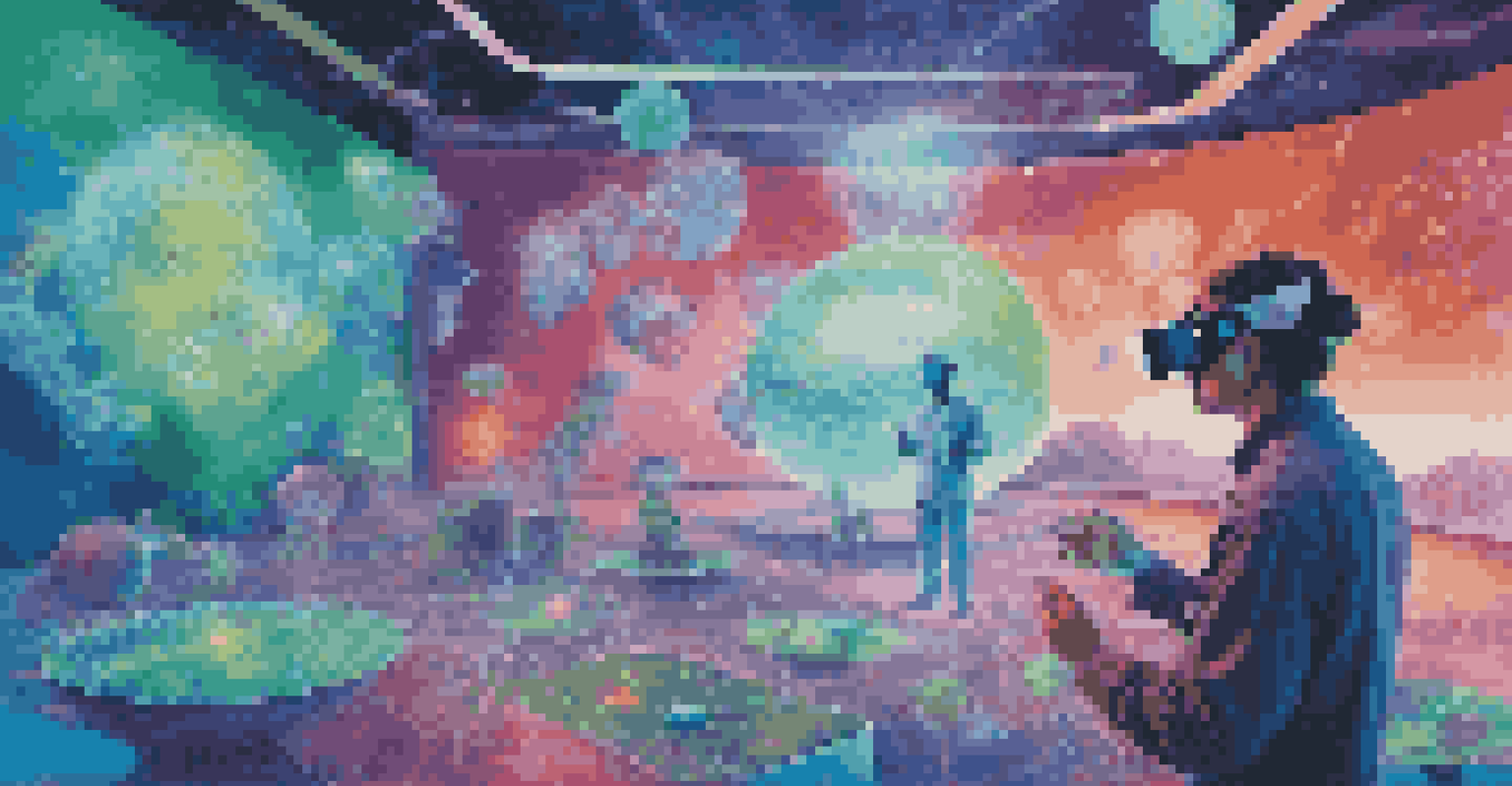The Intersection of Art and Science in Understanding Humanity

The Dual Nature of Art and Science in Human Experience
Art and science may seem like opposites, but they are deeply intertwined in exploring what it means to be human. Both fields aim to understand and express the complexities of our existence, albeit through different lenses. While science seeks to uncover the facts about our physical world, art captures the emotional and subjective experiences that define us as individuals.
Art is the most beautiful of all lies; science is the most beautiful of all truths.
For instance, consider how a scientific study on the brain may reveal how emotions influence decision-making. This hard data can be powerfully illustrated through a painting or a poem that evokes similar feelings, creating a bridge between raw facts and personal experiences. Thus, the dual nature of art and science enriches our understanding of humanity by integrating knowledge and emotion.
When we embrace both perspectives, we can appreciate the full spectrum of human experience. This combination allows for a more holistic view of issues like mental health, where understanding the biological underpinnings can be complemented by artistic expressions of struggles and triumphs.
Historical Context: Art and Science Through the Ages
Throughout history, artists and scientists have often collaborated, each inspiring the other to explore new ideas. During the Renaissance, figures like Leonardo da Vinci exemplified this blend, as he made groundbreaking contributions to both art and science. His anatomical sketches, for example, were not just artistic endeavors but also scientific studies that advanced our understanding of the human body.

As we moved into the modern era, the relationship continued to evolve. In the 19th century, Impressionist painters captured the fleeting effects of light, which paralleled scientific discoveries about color theory and optics. This synergy between artistic innovation and scientific inquiry pushed boundaries and sparked revolutions in both fields.
Art and Science: A Unified Exploration
Art and science intertwine to deepen our understanding of humanity by blending factual knowledge with emotional experiences.
Today, we can see this ongoing dialogue in contemporary projects that fuse technology and creativity, such as digital art and interactive installations. Such works challenge our perceptions and encourage us to look at the world—and ourselves—through a multifaceted lens.
The Role of Art in Scientific Communication
Art plays a vital role in making science accessible to a broader audience. Complex scientific concepts can often be difficult to digest, but artists can transform this information into engaging visuals, making it easier for people to understand. Infographics, animations, and even sculptures can convey intricate ideas in a relatable manner.
The greatest scientists are artists as well.
For example, a documentary film about climate change might blend expert interviews with stunning visuals of nature, helping viewers connect emotionally with the subject. This emotional connection not only fosters understanding but also inspires action, showing how art can galvanize public interest in scientific issues.
Moreover, art can humanize scientists, allowing the public to see the individuals behind the research. By sharing personal stories through art, we break down barriers and foster a deeper connection between science and society.
Scientific Inspiration in Artistic Creation
Conversely, science has been a profound source of inspiration for artists. The wonders of the universe, the intricacies of biology, and the mysteries of physics have all found their way into artistic expression. Artists often draw upon scientific principles to create works that challenge our understanding of reality.
For instance, abstract expressionist painters like Jackson Pollock were influenced by chaos theory, using techniques that reflected the randomness and complexity of natural processes. This connection illustrates how scientific concepts can lead to innovative artistic movements that reshape how we perceive art.
Historical Synergy of Creativity
Throughout history, artists and scientists have inspired each other, leading to groundbreaking innovations and collaborations.
Additionally, artists like Olafur Eliasson use scientific principles to create immersive installations that invite viewers to experience phenomena such as light and water in new ways. This interplay not only showcases the beauty of science but also encourages audiences to engage with complex ideas in a tangible manner.
Art as a Tool for Scientific Exploration
Art can also serve as a powerful tool for scientific exploration and experimentation. Creative approaches can lead to new hypotheses and innovative research methods, allowing scientists to explore uncharted territories. By thinking outside the box, researchers can use artistic techniques to visualize data in ways that reveal patterns and insights that might otherwise go unnoticed.
For example, bioartists use living organisms as their medium, producing works that examine the intersection of biology and art. These projects not only challenge ethical boundaries but also prompt critical questions about life itself, igniting discussions that bridge the gap between science and society.
This creative collaboration fosters an environment of curiosity and exploration, encouraging both scientists and artists to push the limits of their fields. Ultimately, this synergy can lead to breakthroughs that enhance our understanding of ourselves and the world around us.
The Emotional Landscape: How Art Reflects Human Experience
Art has a unique ability to encapsulate and express the emotional landscape of humanity. Through various forms, such as music, literature, and visual arts, creators can convey feelings that resonate deeply with others. This emotional resonance is critical for understanding the human experience, as it reflects our joys, sorrows, and everything in between.
Consider how a poignant song can evoke memories or feelings that connect listeners to shared experiences. Similarly, a powerful painting can capture the essence of a historical moment, allowing us to engage with the past on a personal level. This emotional connection fosters empathy and understanding, which are essential for building a cohesive society.
Future Collaborations for Impact
The future holds exciting potential for art and science to work together, addressing global challenges through innovative and creative solutions.
By exploring themes of love, loss, and resilience through art, we can gain insights into the human condition. Such reflections can serve as a mirror, helping us understand our own experiences while also highlighting the common threads that unite us all.
The Future of Art and Science: A Collaborative Path Forward
Looking ahead, the future of art and science promises exciting possibilities for collaboration. As technology continues to evolve, artists and scientists have unprecedented opportunities to work together, creating innovative projects that blend disciplines. This convergence can lead to new forms of expression and understanding that challenge traditional boundaries.
For instance, virtual reality technology allows artists to create immersive environments that educate viewers about scientific concepts in engaging ways. This not only enhances learning but also fosters a sense of wonder about the universe and our place within it.

By embracing this collaborative spirit, we can harness the strengths of both fields to address complex global challenges. Whether it's tackling climate change through creative campaigns or utilizing art to promote scientific literacy, the intersection of art and science will be key to shaping a more informed and empathetic society.